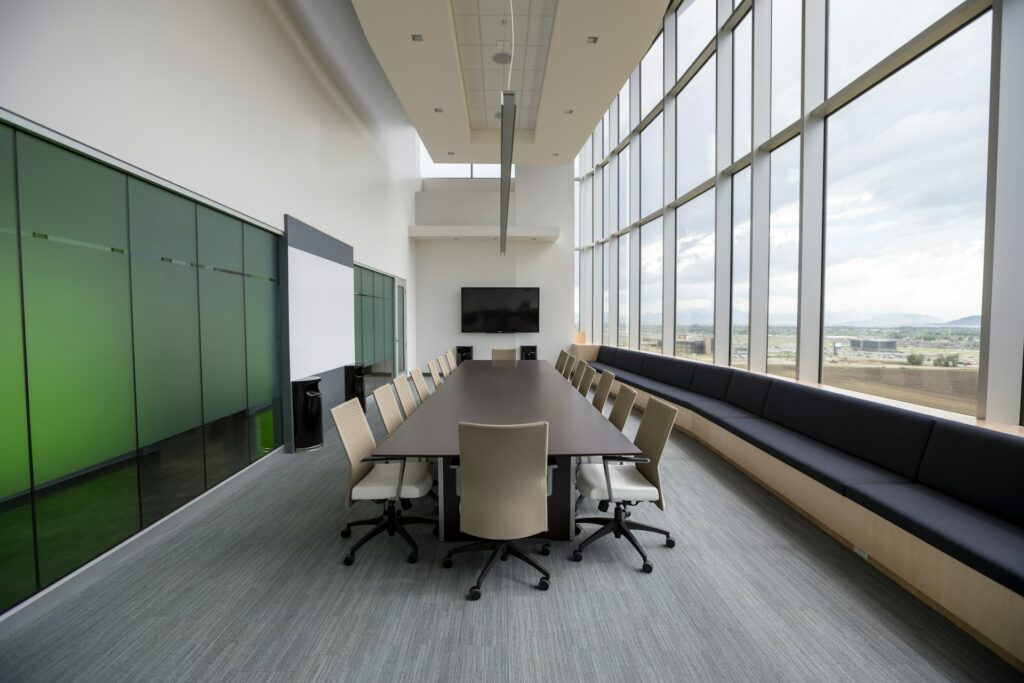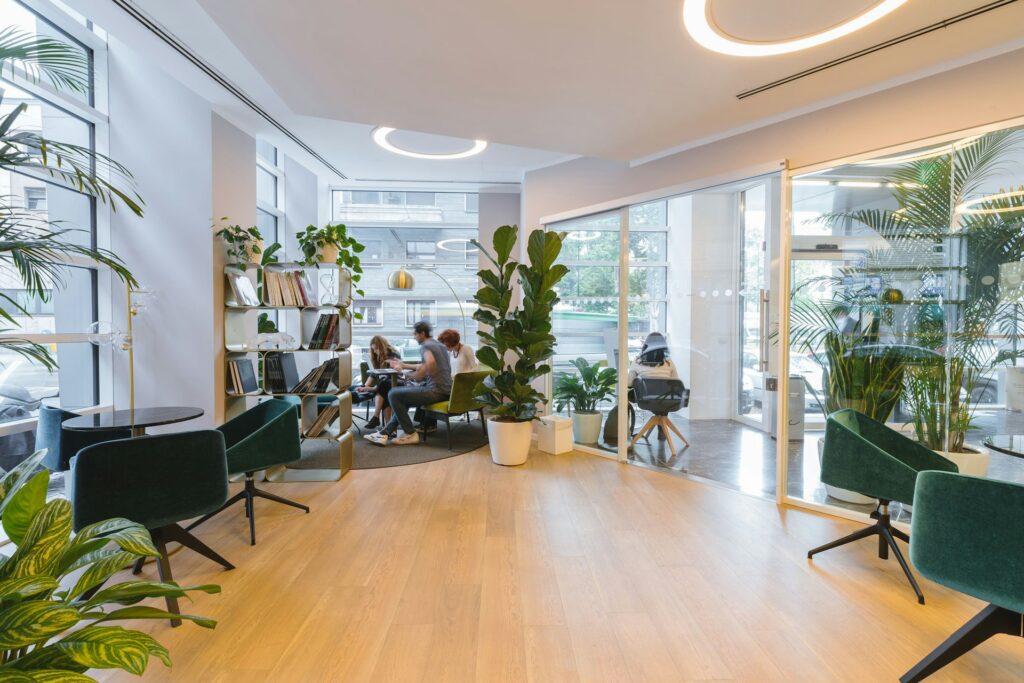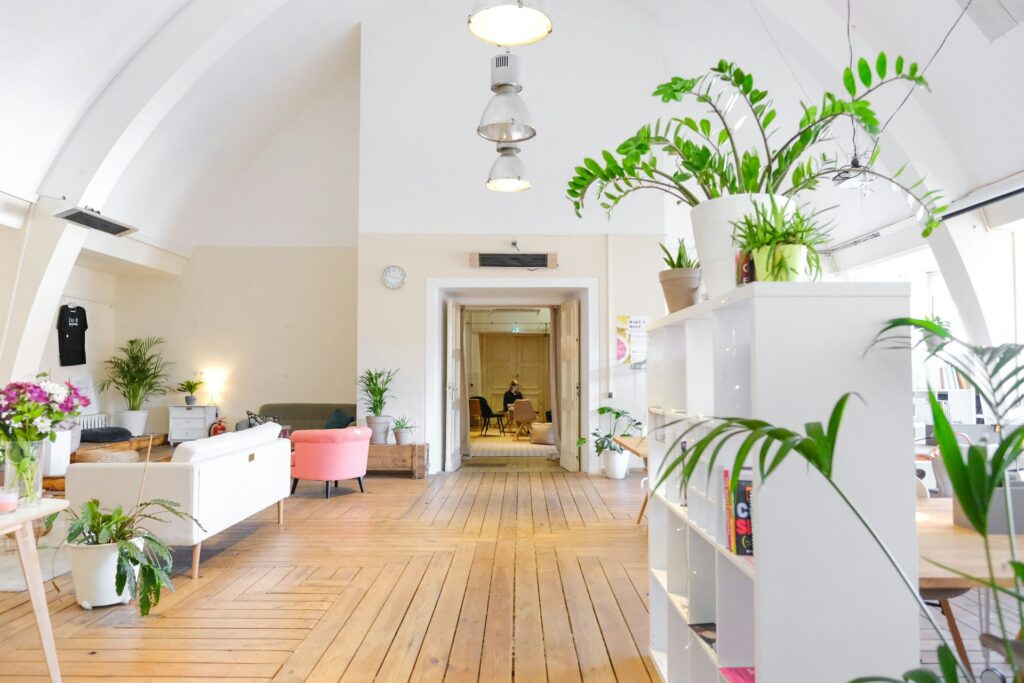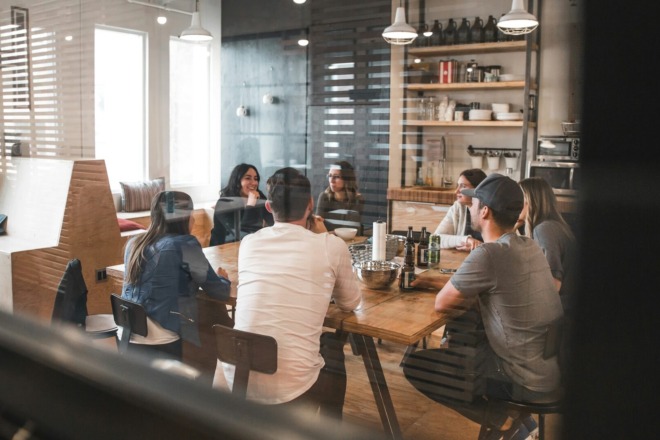Small businesses worldwide have adopted sustainable principles to contribute to a greener planet, from working with eco-friendly suppliers to sourcing materials ethically and using recyclable packaging. However, they also need to adopt sustainable design practices throughout their office spaces. Fortunately, small businesses don’t have to spend a fortune to make their buildings green.
Why Is Sustainable Design Important in the Workplace?
Today’s climate-aware society has spoken: Sustainability across all industries matters. In fact, consumers are willing to pay 9.7% more for eco-friendly goods, even as inflation strains their wallets. Another 43% make more careful purchasing decisions to reduce consumption, with 24% purchasing or planning to invest in an electric vehicle.
Consumers aren’t the only ones eyeing an environmentally conscious market. Employees have also put pressure on companies to lean green. According to a March 2023 Deloitte Consumer Center report, 69% of workers want their companies to invest in sustainable initiatives, such as carbon reduction, renewable energy and waste reduction. Twenty-seven percent even consider a company’s stance on sustainability when accepting a job offer.

Optimizing the workplace for sustainability carries many benefits to small businesses, such as the following:
- Minimized carbon footprint through energy-efficient systems and operations
- Responsible use of natural resources, including water and energy
- Improved air quality for a healthier work environment
- Greater workplace productivity and job satisfaction
- Lower operating costs
- Better brand recognition and reputation
Because so many people care about “going green,” small businesses also have a better chance of hiring and retaining top talent when they emphasize sustainable design practices. Overall, they turn the workplace into an environment everyone wants to be in.
7 Sustainable Design Practices for a Lower Carbon Footprint
Retrofitting the office for sustainability doesn’t have to cost much money. Small businesses can actually make significant changes for under a few hundred dollars and still reap the benefits and savings of energy and resource efficiency. Here are seven ways companies can lower their carbon footprint with green design.
1. Integrate Smart Building Automation
Smart building automation uses cutting-edge technology to automatically oversee and optimize a building’s energy management, including lighting, HVAC and security performance. The device systems are interconnected and utilize artificial intelligence, sensors and data analytics to improve indoor comfort while lowering costs.
Businesses can collect insights and monitor energy outlays in real time, making adjustments as necessary. One study even demonstrated a 20% to 27% reduction in energy use with a smart management system.
2. Switch to LED Bulbs

Lighting eats up a significant portion of energy costs in commercial buildings. By upgrading incandescent lighting to light-emitting diodes (LEDs), companies can save on electricity, lower lighting emissions and reduce waste.
For instance, LEDs use 75% less energy than conventional bulbs. They also last 25 times longer, meaning fewer replacement costs and accumulated trash. Lighting upgrades may seem insignificant for creating a green building, but even small changes add up.
3. Adopt Clean Energy
Renewable energy isn’t just for residences. Businesses can integrate clean energy into their sustainable design, too. Some of the economic benefits of adopting clean energy include:
- Lowering the company’s carbon footprint and helping fight climate change
- Underscoring the company’s commitment to environmental, social and governance commitments
- Contributing to the preservation of the local environment by decreasing fossil fuel use
- Gaining energy independence and garnering a steady energy supply
- Saving money on exorbitant energy costs
- Improving brand image and differentiating from the competition
- Attracting sustainability-focused customers and investors
Small businesses can reduce the costs of commercial clean energy by 90% by considering federal tax credits, state incentives and manufacturer rebates.
4. Install Low-Flow Bathroom Fixtures
Bathroom fixtures may be overlooked when implementing sustainable design practices in an office space. However, replacing outdated toilets with modern WaterSense-labeled models can conserve 20% to 60% of water — equivalent to 13,000 gallons of water annually. In fact, water-efficient toilets use only 1.28 gallons of water per flush, which is still 20% less than federal standards.
Small businesses can take it a step further with a two-stage flush system. These also use 20% less water annually than regular one-flush toilets. While they tend to be 10% to 20% more expensive, dual-flush toilets are ideal for improving sustainability, especially in a small office with a single or double stall.
5. Improve Natural Light and Ventilation
Even if a business uses LEDs in the office, nothing improves energy efficiency and cuts costs like natural lighting. Hopefully, a commercial space has plenty of windows for adequate lighting without flipping a switch.
Using natural light has an impressive impact on a company’s energy consumption and greenhouse gas production. According to one study, when increasing daylighting by 3% to 6%, a building can reduce its carbon dioxide (CO2) emissions by 3% during the year.
Hopefully, employees can open the office windows to enhance ventilation. Proper ventilation removes indoor contaminants for better air quality, helps expel CO2 and dilutes airborne viruses. This is essential for ensuring everyone’s well-being and reducing absenteeism due to respiratory or other health conditions.
Ventilation can also optimize a building’s HVAC system. On a nice day, opening windows can eliminate the need to run the air conditioner.
6. Choose a Light Color Palette

White walls deliver a crisp, clean, spacious and bright aesthetic in an office environment. It also decreases the need for artificial lighting by reflecting more natural light, resulting in less energy consumption and ample savings.
Some might argue that painting the walls white hinders creativity and actually makes workers less productive and inspired. However, there are opportunities for splashes of color, either through accent walls, furniture or decor.
7. Add Air-Purifying Greenery
Something as simple as adding plants to the office has tremendous environmental benefits, improving indoor air quality and increasing team job satisfaction. One study found that employees complained less about dry air, had more positive things to say about workplace attractiveness and had fewer health-related complaints just four months after introducing plants.
Scientists have conducted extensive research on the best air-purifying plants for indoor spaces. These include golden pothos, English ivy, snake, and spider plants. English ivy is particularly effective at absorbing formaldehyde, while golden pothos only need watering every 10 days, making it impossible to kill.
Likewise, a living wall full of lush greenery can easily become an artistic biophilic feature in the office, giving the space visual interest and better air quality.
Lean Green in the Workplace Without Breaking the Bank
Sustainable design practices should be at the forefront of every company’s business model in today’s climate-forward economic landscape. It’s no longer enough for companies to implement recycling or volunteer opportunities in the community to highlight their commitment to corporate responsibility. Among the most effective ways to contribute to environmental stewardship is for small businesses to integrate sustainable design practices into their office space.


